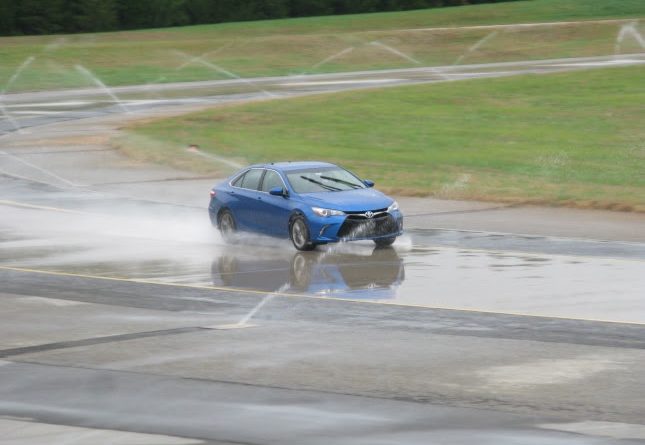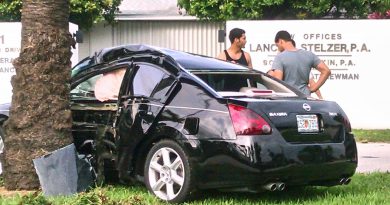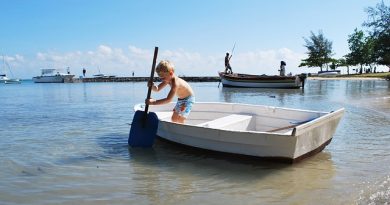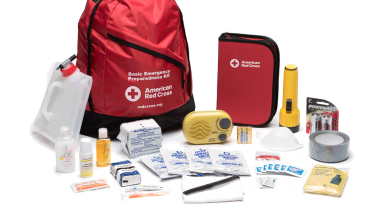TREAD LIGHTLY: WORN TIRES PUT DRIVERS AT RISK
Driving during heavy rains can be just as dangerous as driving on ice-covered roads. New research from AAA reveals that driving on relatively worn tires at highway speeds in wet conditions can increase average stopping distances by a staggering 43 percent, more than the length of a semi-trailer truck when compared to new tires. With nearly 800,000 crashes occurring on wet roads each year, AAA urges drivers to check tread depth, replace tires proactively, and increase following distances significantly during rainy conditions.
“Unfortunately, many motorists neglect the parts of their vehicle where the rubber meets the road,” said Matt Nasworthy, Florida Public Affairs Director, AAA – The Auto Club Group. “Regular tire maintenance is important regardless of weather conditions if motorists want to arrive safely at their destination.”
In partnership with the Automobile Club of Southern California’s Automotive Research Center, AAA conducted testing to understand performance differences at highway speeds between new all-season tires and those worn to a tread depth of 4/32” on wet pavement. AAA research found that:
- Compared to new tires, tires worn to a tread depth of just 4/32” exhibit:
- An average increased stopping distance of 87 feet for a passenger car and 86 feet for a light truck.
- A 33 percent reduction in handling ability, for a passenger car and 28 percent for the light truck on average.
“AAA’s testing demonstrates the impact that tire tread has on safety,” said Megan McKernan, manager of the Automobile Club of Southern California’s Automotive Research Center. “If tested side-by-side at 60 mph, vehicles with worn tires would still be traveling at an alarming 40 mph when reaching the same distance it takes for vehicles with new tires to make a complete stop.”
While AAA’s research found that tire performance does vary by brand, price is not necessarily an indicator of quality. In fact, worn tire performance deteriorated significantly for all tires tested, including those at a higher price point. AAA advises shoppers to research options carefully before selecting a replacement tire for their vehicle, and never choose one based on price alone.
“Preventative car care is a must,” continued Nasworthy. “AAA came to the rescue of over 700,000 thousand tire related breakdowns in 2017. If motorists are not comfortable performing a tire inspection, they should make sure to have their vehicle serviced at a reputable automotive repair shop.”
Unfortunately, current industry guidelines and state laws and regulations frequently recommend that drivers wait until tread depth reaches 2/32” to replace tires. Not only does this recommendation jeopardize a driver’s safety, it minimizes manufacturer warranty costs and is often paired with environmental concerns. By prioritizing safety, AAA maintains that tires should be replaced once the tread depth reaches 4/32”, when stopping distances have already begun to deteriorate significantly. AAA’s comprehensive evaluation of tire tread laws and regulations across U.S. states found a state requirements range from inadequate to non-existent.
AAA offers these precautionary tips:
- Inflate the tires to the recommended setting outlined on the tire information placard found most often on the driver’s door jam or the vehicles owner’s manual.
- Check the tires monthly. Tires will typically lose up to 1 psi per month, and pressure drops about 1 psi for every 10-degree drop in air temperature.
- Buy a good tire gauge. It’s also a good idea to buy a portable compressor that works off of your car’s power outlet; available at many auto parts stores.
- Tires also lose air to common punctures, so if you find you’re always adding air to one particular tire, it might have a slow leak. Have it checked out by a trained service technician.
In wet conditions, tires can completely lose contact with the road and skid, also known as hydroplaning. The depth of a tire’s tread plays a significant role: the lower the tread depth, the more likely a car will hydroplane.
AAA recommends the following precautions for drivers navigating rain soaked roads:
- Avoid the use of cruise control in order to respond quickly if the car loses traction with the road.
- Reduce speed and avoid hard braking and making sharp turns.
- Increase following distance to allow for ample space if a sudden stop occurs.
- If the vehicle begins to hydroplane, gently ease off the accelerator and steer in the direction the vehicle should go until traction is regained. Do not brake forcefully as this can cause the vehicle to skid.
The full report, fact sheet and other information regarding this study can be found on the AAA NewsRoom.
AAA helps take the guesswork out of finding a trusted repair shop with its Approved Auto Repair (AAR) facilities. Each AAR facility must adhere to a stringent set of standards for certifications, technical training, cleanliness, insurance requirements, and customer service set forth by AAA. Shops with the AAR designation signal to drivers a vetted facility, inspected annually, that will offer fair pricing and quality service. To locate an AAR facility, drivers can visit AAA.com/AutoRepair. Additionally, AAA also offers a free repair cost calculator, also found at AAA.com/AutoRepair, that provides drivers the ability to estimate the cost of a repair or to verify a quote received for their vehicle.
About The Auto Club Group
The Auto Club Group (ACG) is the second largest AAA club in North America. ACG and its affiliates provide membership, insurance, financial services and travel offerings to over 9.5 million members across eleven states and two U.S. territories including Florida, Georgia, Iowa, Michigan, Nebraska, North Dakota, Tennessee, Wisconsin, Puerto Rico and the U.S. Virgin Islands; most of Illinois and Minnesota; and a portion of Indiana. ACG belongs to the national AAA federation with more than 58 million members in the United States and Canada and whose mission includes protecting and advancing freedom of mobility and improving traffic safety. Motorists can map a route, identify gas prices, find discounts, book a hotel, and access AAA roadside assistance with the AAA Mobile app for iPhone, iPad and Android. Learn more at AAA.com/mobile. AAA clubs can be visited on the Internet at AAA.com.




